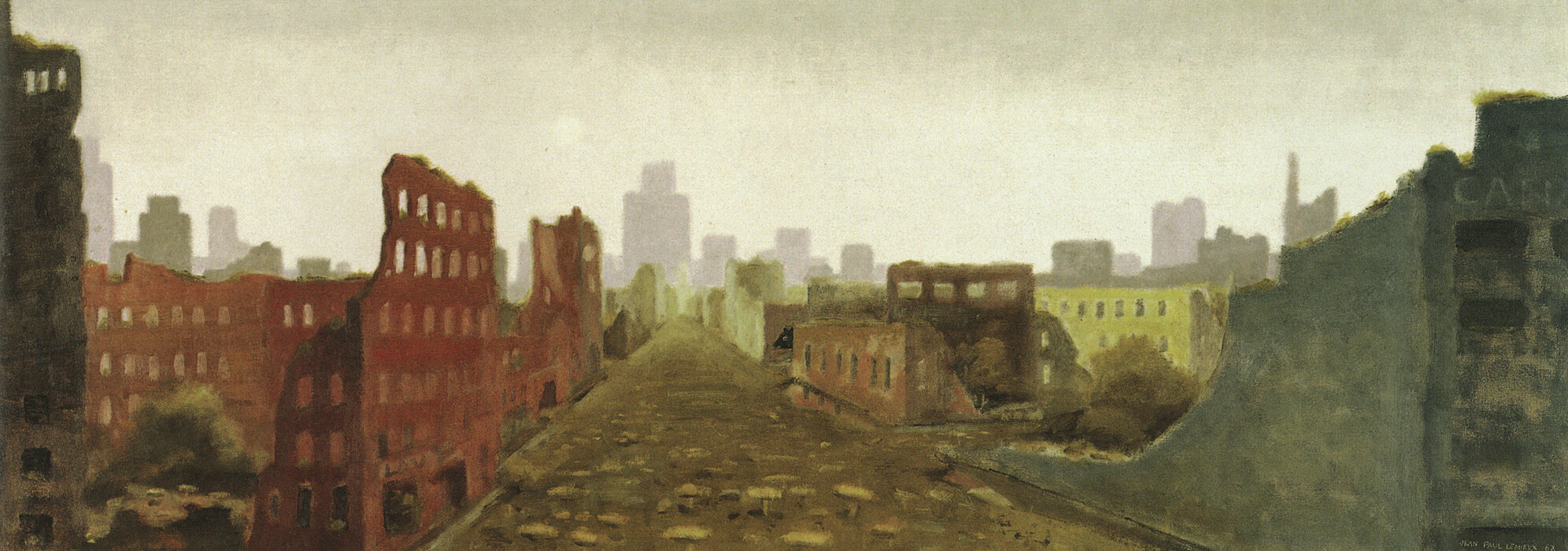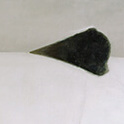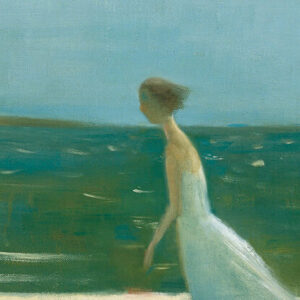The Aftermath/La ville détruite 1968

Jean Paul Lemieux, The Aftermath/La ville détruite, 1968
Oil on canvas, 50.5 x 136 cm
Private collection
In his mature works, Jean Paul Lemieux looks on the city with distrust. He condemns it in the deserted houses of Night in Québec-Ouest (La nuit à Québec-Ouest), 1964, and in the boarded-up façades of Summer in Montreal (L’été à Montréal), 1959. In truth, Lemieux was never a city person in his soul. When the warm weather arrived he always escaped to L’Isle-aux-Coudres, where, after his retirement from teaching in 1965, he devoted himself entirely to painting.
Yet he was fascinated by urban spaces. His earlier enchantment with the glories and charm of Quebec City had given way to disenchantment; it was now the city’s transformation that obsessed him. “The machine age with its dreadful uniformity is spreading and crushing all that gave Quebec its unique character among the cities of America.”

To Lemieux the contemporary city, a powerful metaphor for modernization, was responsible for a loss of humanity. “I have always distrusted technology and scientists. Some day all their inventions will blow up the world!” Toward the end of the 1960s his disquiet took the form of apocalyptic visions, in which the city was no longer simply an appealing backdrop or one of the characters in a painting but instead took the title role. In Quebec City Is Burning (Québec brûle), 1967, the city is in flames. In The Aftermath/La ville détruite, the city centre has been devastated by a nuclear attack, and abandoned. The main street is overrun with atomic mushrooms drawing the eye upward to a horizon of grey towers rising out of a polluted fog, the result of the catastrophe.
Jean Paul Lemieux’s first drawings, made when he was eight, were of the wreck of the Titanic, and they represent an early, distant source for this tragic iconography. Evidence of the theme of disaster can also be found in the illustrations he designed in 1931 for the science fiction novel La fin de la terre by Emmanuel Desrosiers, and in his admiration for painters Monsù Desiderio, a pseudonym for two early-seventeenth-century artists who were famous for their renderings of ruins, catastrophes, fires, and collapsed buildings.

 About the Author
About the Author
 More Online Art Books
More Online Art Books
 Acknowledgements
Acknowledgements